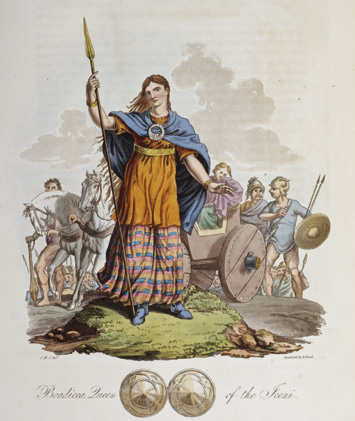Why did the Romans Cross the Channel? (On Roman Invasion of Britian)
This post caters to the study of the Complementary Course “Evolution of Literary Movements”, assigned for students of BA English programme at CMS College.
BC 3000 to AD 455: Pre English
1. The Iberians
2. The Celts
3. The Romans
I.
Rome
Rome has such a deep rooted impact in history and culture. A
few proverbs are enough to prove it:
Rome was not built in a day
All roads lead to Rome
When in Rome, be a Roman
Rome is the capital city of Italy.
 |
Rome: a place of history. The practice ground of various
systems of governance: monarchy, republic, imperialism (colonialism)
The recorded history of Rome goes back to BC 8th c.
1. 1. Roman Kingdom
The twins Romulus and Remus, descendants of the Trojan
prince Aeneas are supposed to be the founders of Rome.
Read more: https://en.wikipedia.org/wiki/Romulus_and_Remus
After being under the system of kingship, Rome transforms as
a republic.
2. Roman Republic
BC 6th C: establishment of the Roman republic.
Authority for the magistrates, senate and military.
Triumvirate system: the play “Julius Caesar” speaks of this.
BC 51 – 45: Slow emergence of power under Julius Caesar
BC 44: Assassination of Julius Caesar. Octavian or Octavius
Caesar enters into power.
BC 31: annexation of Egypt (war with Cleopatra and Mark
Antony: portrayed in Shakespeare’s “Antony and Cleopatra”)
BC 27: Roman senate grants overarching power to Octavian and
gives him the new title “Augustus”. He is the Augustus Caesar mentioned in the Bible,
who orders a census at the time of Jesus’ birth.
1. 3. Roman Empire (1500 years)
Pax Romana
Later emperors: Caligula, Claudius, Nero, Vespasian,
Domitian, Trajan, Commodus, Diocletian
AD 324: Constantine: establishment of a new capital city:
Byzantium (renamed Constantinople). Byzantium is featured in two poems of W B
Yeats. Till then, a few places of Rome had the status of being the capital at
one time or the other.
Adopted Christianity (earlier, Christianity was a persecuted
religion)
Emperor Theodosius I: (Died in AD 395): division of the
Empire into East and West
AD 496: Western Roman Empire erodes in power
Eastern Roman Empire remains in power till 1453, when it
fell to the Ottoman Turks
II.
Roman Invasion of
Britain
In our study of the Celts, we mentioned three tribes: Gaelic
(Goidelic), Brythons, Belgae.
The Belgaes maintained cordial relations with their kinsmen
in Northern Gaul in the European mainland.
Julius Caesar of Rome conquered these Celtic territories in
Gaul, and then he had an eye on the British Isles.
BC 55: First Roman expedition to Britain under Julius
Caesar. But Caesar was defeated.
BC 54: Caesar returned and subdued the Celts. The defence
put in by the legendary King Cassivelanus (of the tribe of Cattivelauni) was swept
away by the Romans who emerged as conquerors.
Julius Caesar had to return to Rome, where he was
assassinated.
King Cunobelin of Colchester (the Cymbeline of Shakespeare’s
play) had cultivated the friendship of the first and second Roman emperors
Augustus and Tiberius. The third Roman emperor Caligula (AD 37 – 41)
issued orders for a conquest of Britain, but that did not take place. Three
years later, in AD 43, Rome conquered Britain under the orders of the Roman
emperor Claudius (AD 41 – 54). By AD 50, Rome brought Kent, Colchester and the southern and
eastern areas of Britain under control.
The Celtic tribes in the northern and western areas put in
stiff resistance. The Romans had initial difficulty to conquer the people in
these mountainous terrains and swamp filled forests. By AD 60, the
Romans managed to bring under control the low lying island of Anglesey. The
Druid priests of the Celts were mercilessly killed.
 |
The march forward to further north was cut short when they
had to return to Norfolk in the south, where there was a rebellion by the
Celtic tribe of Iceni. The people had long put up with the cruelty of the Roman
soldiers, but they had to resist when the cruelty was directed against their
queen Boudicca, and hence the rebellion. This too was put down by the Romans.
The Iceni were massacred, and Queen Boudicca and her daughters commited
suicide.
After this, there were no major challenge for the Romans.
The savage north continued to be a problem but the Roman method of conquest was
by making military roads on which forts were built. The wild West were
subjugated after 35 years of occupying Britain.
Bringing the Picts and Scots of the North under control was
another problem. Therefore the northern frontier was marked off by a huge wall
erected on the orders of Emperor Hadrian in AD 123. The ruins of
this Hadrian’s Wall can be seen even today.
The Roman governor Agricola ordered a line of forts between
Glasgow and Edinburgh. This came to be known as Antoine’s Wall. Both these
walls helped the Romans to keep out inroads from the north.
With all rebellion hushed down, the Romans establish themselves as the third and last conquerors in the Pre English period, and start their administrative establishment in Britain.


0 Comments:
Post a Comment
Subscribe to Post Comments [Atom]
<< Home